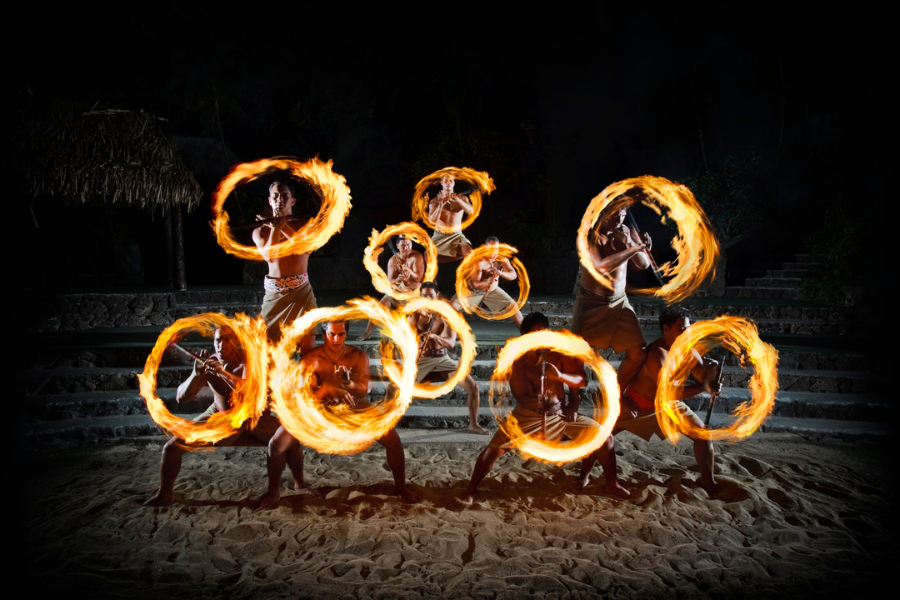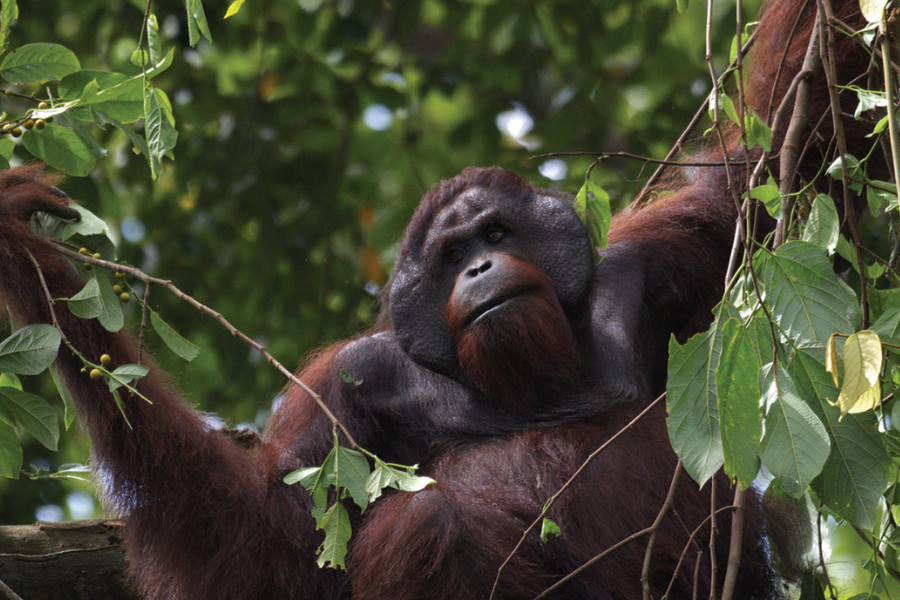Fall in Love with Fiji

In the Fijian village of Navula, an American man selected as “chief” of his visiting tribe of countrymen claps once, shouts “Bula!” a traditional Fijian greeting, and downs a coconut shell of kava in one gulp. He claps three more times and says “Vinaka” to thank his host, the chief of Navula.
The ritual is part of the traditional kava ceremony, a way for villagers to welcome guests to this remote South Pacific outpost far from the beachfront resorts spread across the archipelago’s 300-plus islands. The visiting chief and his compatriots are invited to stay and have more kava, Fiji’s national drink.
After a second cup of the earthy, muddy-brown concoction, the American chief looks like he has had a long massage followed by a rather strong cocktail. His serious expression has widened into a grin, and that invisible pole that was keeping his posture so rigid has turned into a noodle.
Let’s just say he’s relaxed. Very, very relaxed. Kava, made from the root of a yaqona plant, is non-alcoholic, but it’s a mild sedative that brings on a sense of tranquility and well-being.
If you’re a Type A personality that can’t unwind on vacation, this elixir is for you.
The American smacks his lips and says he can’t feel his tongue. It happens, but the temporary numbness rarely stops anyone from imbibing.
This cultural enrichment experience provided by Sigatoka River Safari, an outfitter that specializes in acquainting tourists with the rich Melanesian-Polynesian culture of rural Fiji, offers a chance to see everyday village life. It’s a simple existence without all the trappings of modern life, but Fijians are known as some of the happiest people on Earth, and that’s not just because of the kava.
Their cheerful “bula spirit” is contagious.
Sitting cross-legged around the tanoa, a large communal bowl of kava, everybody gets to know each other. Fijian men wearing sulus, a kind of sarong, share stories about their heritage and Fijian traditions.
Getting to the village is half the fun of this river safari. A jet boat speeds along the Sigatoka River, the longest river on the island of Viti Levu and the lifeblood of the region. Lush, verdant mountains flank the waterway, and waterfalls and scenic canyons are around every river bend. The boat roars past locals going about their daily lives, mostly farm chores. The fertile Sigatoka Valley is known as Fiji’s “salad bowl” because its small, productive farms grow fresh produce.
Until the 1950s, navigating the Sigatoka River was the only way to reach the interior from the coast. Running from the hills of Navosa Province to the sand dunes of Kulukulu on the Coral Coast, the river is a source of fresh drinking water and food.
The Americans dine on its bounty at a traditional lovo lunch that includes slow cooked fish. Lovo is the traditional Fijian method of cooking in an underground earth oven, allowing copious amounts of food to be prepared at once for special occasions. Massive pork shoulders and whole chickens wrapped in palm fronds or banana leaves are thrown into the smoky pit atop a pile of hot stones, then layered with root crops like sweet potatoes, cassava, and taro. The lavish subterranean feast probably started steaming long before these lucky diners had their first cup of morning coffee.
At last, the meal is unearthed, emitting an irresistible aroma, then served picnic-style on the floor. Juicy meat falls off the bone, and the fish is flaky and tender.
When it’s time to say goodbye to this carefree village, some appear reluctant to return to the boat and the comfort of their resort. The people of Navula have little, but they do seem to have a collective peace of mind, and that’s far more precious than material things. www.sigatokariver.com
Hit the Beach!
Fiji’s beaches are some of the most pristine in the world, and with so many to choose from, it’s easy to find your personal paradise. Whether you’re a honeymooner looking for complete seclusion, a thrill seeker eager for adventure, or a nature lover ready to get better acquainted with marine life, your palm tree-studded utopia awaits.
Yasawa Island Resort and Spa on Yasawa Island
Several of the best beaches are on Yasawa, the northernmost island in the Yasawa island chain. Yasawa is Fijian for Heaven, and the moniker is well-deserved. The all-inclusive Yasawa Island Resort and Spa is the only commercial development on the 13-mile-long island. Surrounded by 11 isolated powdery white sand beaches, it’s a newlywed’s dream. Check into one of 18 private luxury bungalows, and let the romance begin.
An excursion to the Blue Lagoon Caves is a must. Exploring these ancient limestone caves filled with calm azure water is a vacation highlight for many. www.yasawa.com
Six Senses on Malolo Island
Six Senses, an eco-friendly luxury resort with 24 pool villas, offers many ways to enjoy the water. Experienced surfers are only 15 minutes away from Cloudbreak, the legendary wave that has all the power of the mighty South Pacific behind it. Even the pros get an adrenaline rush from conquering this moody, volatile wave. But not all the of the surf is so challenging; there are plenty of mellow surf spots for beginners, too.
For a low key way to enjoy this vast aquatic playground, grab your snorkeling gear and immerse yourself into an enchanted underwater world teeming with sea creatures. Malolo is surrounded by clear water and some of the most diverse, unspoiled coral reefs in the world. They are home to curious sea turtles, including the critically endangered hawksbill named for its pointed, bird-like face. Hundreds of species of colorful reef fish like to play hide-and-seek with snorkelers, darting behind gently-waving sea fans and rose-colored anemone, then popping out moments later. www.sixsensesfiji.com
Likuliku Lagoon on Malolo Island
Take your subaquatic adventures to the next level at Likuliku Lagoon, a luxury, adults-only resort that features 45 “bures,” traditional thatched Fijian villas, some built right over the water. Certified divers can choose from dozens of dive sites in the Mamanuca Islands, and most are just a short boat ride away. As you float through the soft corals Fiji is famous for, you may encounter large manta rays undulating their flat bodies as they search for food or a pod of playful dolphins.
Divers can also swim through the eerie skeleton of a shipwreck and see what remains of a WWII B26 bomber. www.likulikulagoon.com
Wrap up your stay in Fiji with a traditional song and dance performance known as meke, a window into the country’s culture and traditions. Most resorts stage them at least once a week. A diverse repertoire features everything from spear-wielding, bare-chested men stomping out a war-like dance to graceful, garland-clad women telling age-old tales through song.
Tracey Teo is a writer living in Evansville, Indiana.





